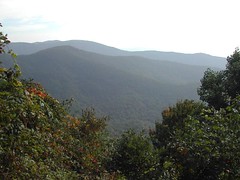Gathering storm
Two new reports on global warming that should make lots of people think:
From the Natural Resources Defense Council and the Florida Coastal and Ocean Coalition, a report on the future of Florida, Preparing for a Sea Change in Florida (40 page PDF).
From another coastline I love, this report on the Great Lakes from National Parks Conservation Association and HealthyLakes.org, Great Lakes restoration and the threat of global warming (36-page PDF). Some of the changes predicted without prevention:
From the Natural Resources Defense Council and the Florida Coastal and Ocean Coalition, a report on the future of Florida, Preparing for a Sea Change in Florida (40 page PDF).
The first and most important step, of course, is to curb emissions, but even if we do that we will need to address the impacts that are predicted to occur. We can do this by:
* Restoring coastal and marine ecosystems so they can better cope with the stress of climate change and ocean acidification.
* Discouraging development in vulnerable areas to prepare for rising sea levels, as well as restoring and protecting natural buffers.
* Preparing for extreme weather events by protecting and restoring shoreline vegetation and wetlands, upgrading stormwater management, and increasing water-use efficiency through conservation and recycling treated wastewater for irrigation and industrial use.
From another coastline I love, this report on the Great Lakes from National Parks Conservation Association and HealthyLakes.org, Great Lakes restoration and the threat of global warming (36-page PDF). Some of the changes predicted without prevention:
· Daily high temperatures in the region will increase 5.4 to 10.8 degrees relative to what was typical from 1961-1990, with wintertime temperatures increasing even more than summer temperatures.Lake levels have been a problem for years so adding another couple feet on to an existing problem is scary. As well as the threat of more lake-effect snow: seems that's an increasing problem already.
· Increased evaporation from warming lakes—particularly in winter—is expected to result in less ice cover, contributing to lower water levels and increases in lake-effect snow.
· Lake levels could drop during the next century by approximately 1 foot on Lake Superior, 3 feet on Lakes Michigan and Huron, 2.7 feet on Lake Erie, and 1.7 feet on Lake Ontario.
Labels: environment, Florida





0 Comments:
Post a Comment
<< Home